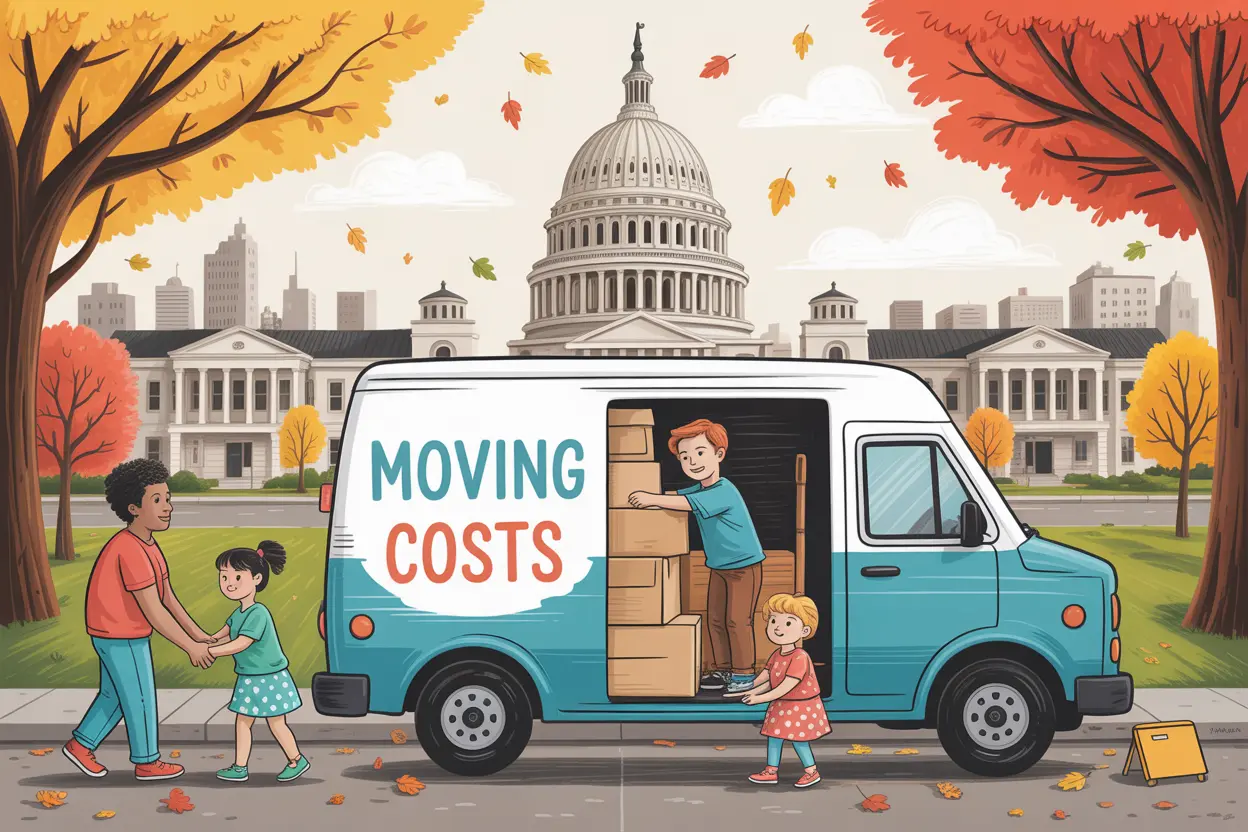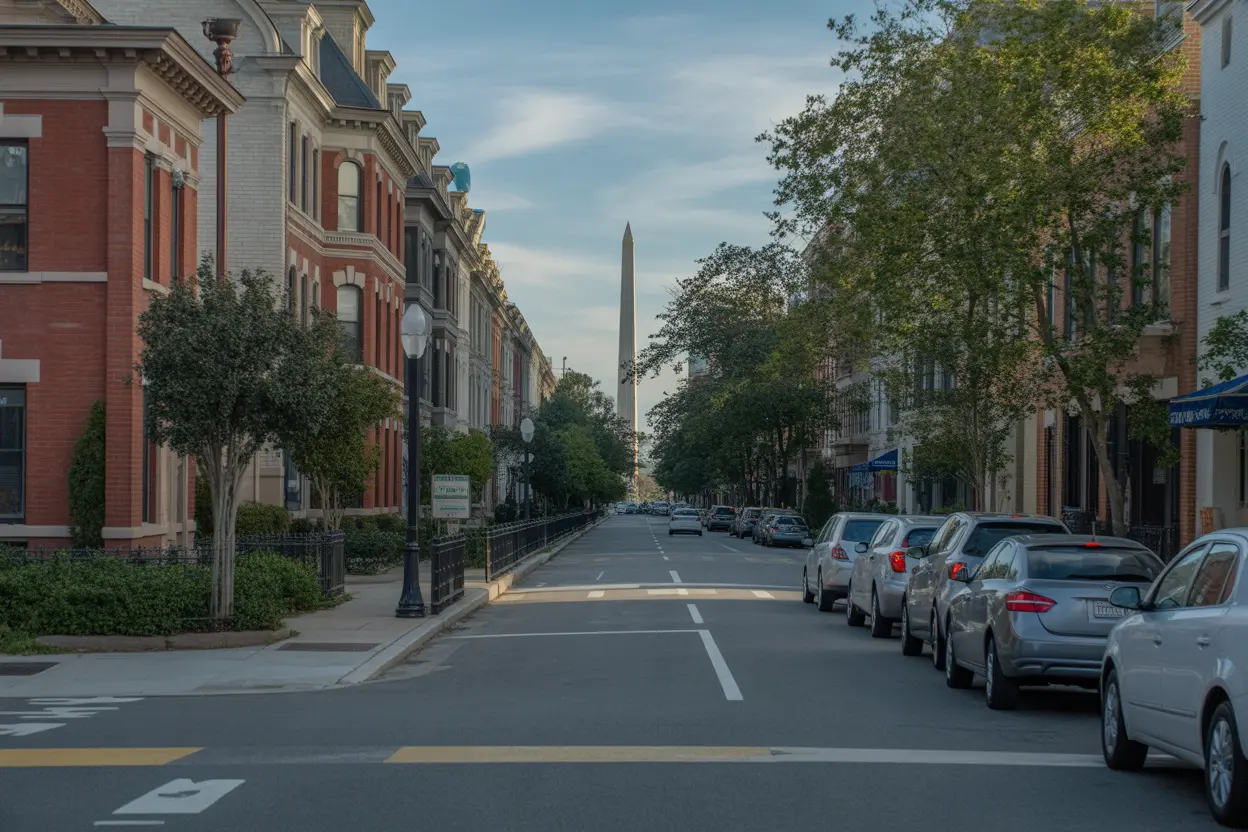Top 5 Moving Mistakes to Avoid in Washington, DC

Relocating to a new home is one of the most stressful events in life, and in a vibrant, fast-paced city like Washington, DC, the stakes are even higher. From navigating narrow streets and restricted parking to managing tight schedules and paperwork, the process can quickly become overwhelming. Fortunately, understanding the common moving mistakes to avoid can make an enormous difference in the success of your move. Whether you’re moving within the city or coming from out of state, using a Washington moving company that knows the unique challenges of the area is crucial. In this article, we’ll walk through the top 5 moving mistakes in Washington, DC — and how you can avoid them with careful planning.
1. Underestimating Washington, DC’s Urban Logistics
One of the biggest mistakes people make when relocating in DC is overlooking the unique logistical challenges of the city. From its dense neighborhoods to historic restrictions, moving in Washington, DC is not like moving anywhere else.
Parking Permits and Restrictions
DC requires parking permits for moving trucks in many residential areas. Forgetting to obtain one can result in costly tickets or having nowhere to legally unload. Always check with the DC Department of Transportation (DDOT) well in advance to arrange for a moving permit.
It’s also important to note that some neighborhoods have strict limitations on where and when moving trucks can park. For example, Georgetown and Dupont Circle have narrower streets and more restrictive residential zones where trucks may not be allowed during certain hours. Make sure to inquire with your building’s management or HOA about any special requirements or forms they may need for your move.
Traffic and Timing
Timing is everything in DC. Avoid rush hours—typically 7–10 a.m. and 3–7 p.m.—to prevent delays. Also, always leave buffer time for unexpected delays due to road closures, protests, or heavy traffic near government buildings.
In addition to typical traffic jams, keep in mind that DC hosts various events, parades, and demonstrations year-round that can impact traffic unpredictably. Check local listings and city event calendars in advance. Additionally, plan for your movers’ access—provide maps, entry instructions, and contact information in case obstacles emerge on the day of your move.
2. Poor Packing Practices
Moving packing mistakes in Washington, DC are common, especially when people try to pack everything themselves in a hurry. Proper packing not only protects your belongings but also saves time and stress on moving day.
Inadequate Supplies and Techniques
Avoid using fragile or reused boxes, and be wary of overloading containers. Label each box clearly by room and priority. Invest in bubble wrap, packing paper, and sturdy boxes—or leave it to professional movers who are prepared with the right tools.
Pack fragile items like dishes vertically in smaller boxes and use plenty of padding materials. It’s also wise to create an inventory list to track what’s in each box, especially for more valuable items. Doing so will make the unpacking process much smoother and help you file a claim in case of loss or damage.
Packing Last-Minute
Procrastinating until the night before your move is one of the most common moving mistakes. Aim to start packing non-essentials two weeks in advance. By using a comprehensive Washington, DC moving checklist, you can ensure nothing gets missed or rushed.
Last-minute packing often leads to rushed decisions, damaged items, or things being forgotten entirely. It’s a smart idea to tackle one room at a time, starting with areas you use the least, like the guest room or storage closet. Gradually work your way to essential spaces like the kitchen and bedroom closer to moving day.
3. Skipping the Research on Moving Companies
Choosing the wrong moving company can be disastrous. It’s important to vet your movers thoroughly, especially in high-demand areas like Washington, DC.
Not Reading Reviews or Verifying Licenses
Look for companies with strong reputations, verified reviews, and necessary credentials, such as DOT numbers and insurance. A reputable Washington moving company will gladly provide references and documentation, giving you peace of mind.
Don’t just rely on testimonials from a company’s website—check multiple third-party platforms such as Yelp, Better Business Bureau, and Google Reviews. Also, verify their insurance coverage and dispute resolution policies. Ask what happens if an item is damaged in the move and make sure it’s in writing.
Choosing Based Solely on Price
Cheap doesn’t mean good. While cost is important, a lower price might indicate hidden fees, lack of experience, or inadequate service. Get at least three written estimates and compare inclusions thoroughly.
Also, be wary of companies requiring unusually large deposits or those unwilling to provide a physical walkthrough for an accurate estimate. A trustworthy mover will offer transparency about what’s included in the price and won’t surprise you with unexpected charges.
4. Not Following a Detailed Moving Checklist
What to do when you move checklist is more than just a convenience; it’s a necessity, especially when moving in a city as complex as DC. Overlooking key steps can cause unnecessary chaos during your transition.
Following a Week-by-Week Plan
From forwarding your mail and transferring utilities to decluttering and confirming move-in logistics, a good checklist ensures nothing gets forgotten. Begin planning at least six weeks before the move and break tasks into manageable chunks.
It’s helpful to give yourself weekly goals—one week can be devoted to donating unwanted items, the next to sourcing packing materials. Spacing out the process also lets you troubleshoot problems early if something doesn’t go according to plan.
Failing to Notify Key Parties
Notify your employer, schools, healthcare providers, and subscription services of your new address. Skipping this can result in missed paperwork, late notices, or lapses in insurance and services.
Don’t forget your car registration and voter registration—both need to be updated if you’re changing jurisdictions. Setting up mail forwarding through USPS temporarily ensures nothing important is lost in the shuffle, especially during the first 30 days at your new address.
5. Misjudging the Size and Scope of Your Move
Another one of the common moving mistakes to avoid is underestimating how much stuff you really have—or overestimating how much you can do yourself.
Ignoring the Need for Storage or Equipment
DC residences often lack elevators or generous loading areas. If you’re moving into an apartment with tight staircases or a townhouse with street-only parking, factor in specialized equipment or short-term storage needs.
Elevator reservations and loading dock times are often required in condo and apartment buildings within the city. Reserve these early so your movers have smooth access without surprise restrictions. If you’re between leases or facing a gap in occupancy, consider short-term storage at a secure offsite facility to avoid scrambling with your items at the last minute.
Overestimating DIY Capability
Many assume they can handle the entire move solo or with friends. In reality, hiring professional movers not only reduces stress but can also provide much-needed efficiency when dealing with buildings’ elevator schedules, limited time windows, or bulky furniture.
Beyond physical exertion, moving often requires heavy lifting expertise and logistical know-how. Suppose large furniture needs to be disassembled or reassembled or items must be transported through awkward entrances. In that case, professionals can perform these tasks quickly and safely—reducing the risk of injury or property damage.
Tips to Avoid These Mistakes
- Start Early: Give yourself at least six weeks for planning, organizing, and packing.
- Use a DC-Specific Checklist: A Washington, DC moving checklist should account for permits, traffic, and building rules.
- Hire Reputable Movers: Work with an experienced Washington moving company to navigate city-specific challenges.
- Declutter Before Packing: Get rid of items you don’t need to save time and costs.
- Label Your Boxes: Clearly mark contents and destination rooms to help movers and make unpacking smoother.
- Reserve Elevators and Loading Zones: Coordinate with your building to avoid moving day delays.
- Photograph Valuable Items: Document delicate items before the move for your records and insurance.
Conclusion
Moving in Washington, DC presents unique challenges that can trip up even experienced movers. But by understanding the moving mistakes in Washington, DC and preparing with a detailed plan, it’s possible to relocate seamlessly. Remember, the most common moving mistakes to avoid include poor planning, underestimating urban logistics, and attempting DIY when professional help is a better option. Utilize a Washington, DC moving checklist and make sure to partner with trusted movers who specialize in the area. Prioritizing these tips will ensure your move is efficient, safe, and stress-free from start to finish. By giving attention to detail and planning ahead, you’ll not only protect your belongings but also feel more at ease navigating the unique demands of relocating in our nation’s capital.


